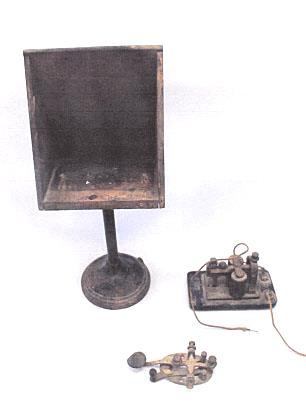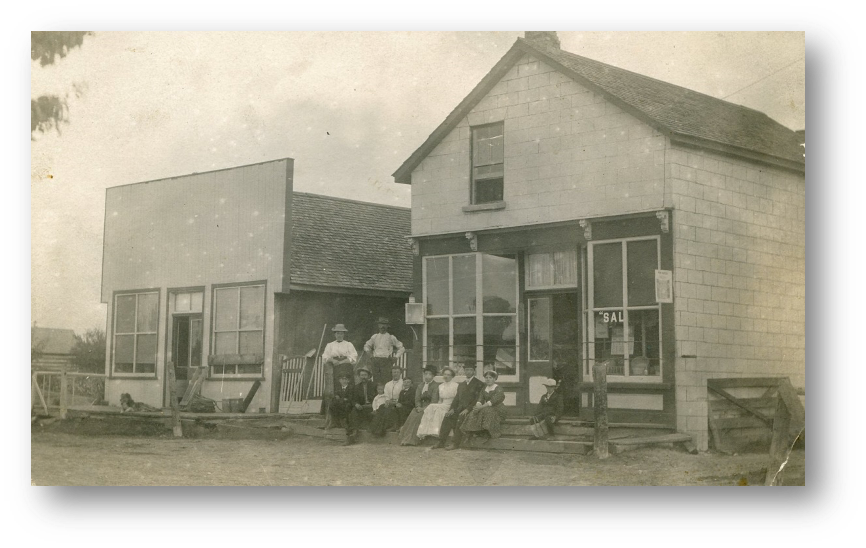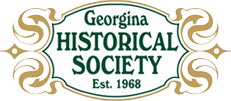Click to Download the PDF
Download the Word Doc
President’s Message
Welcome to the Georgina Historical Society’s March 2020 newsletter. At our February General Meeting Paul Brady spoke on the Lake Simcoe Ice Industry and its contribution to the town and society. It was a very interesting presentation with lots of pictures of the ice harvesting and storage buildings from the 1870s to the 1920s. Jackson’s Point was the hub of the thriving ice industry…great to learn more of our local history.
We would like to extend a warm welcome Jodi Pridham, the Town of Georgina’s New Cultural Services Director. Our next General Meeting will on Tuesday, March 17, at the Kin Hall in Sutton , coffee at 6:30 , meeting at 7:pm. Sally Krigstin will be speaking on Trees, Wood and Culture. In this talk we will explore a selection of trees from across the globe and see how the special characteristics of wood make it suitable for unique cultural uses. If you have a wood object that has a special meaning to you or use in society, please bring it and share with the group.
Looking forward to seeing you there!
~ Tom Glover
BUYING A SON – by Tom Glover
Adoption was a rather informal procedure in the early part of the 20th century. Babies whose mothers had died in child birth, babies and young children from families unable to care for them and babies from unwed mothers were often given to family members or neighbours to raise. Although no legal adoption procedures were followed they would be raised and loved by their “adoptive” parents as if born to them. They would assume the surname of their new parents and be known in the community as their children.
I had an elderly gentleman from the USA come to our door one day looking for the home where his deceased wife was born. Fortunately I had heard from my father the story of two young neighbour children being raised by a family in East Gwillimbury and taking the name of their new parents. I was able to direct the man to the farm down the road where his wife had been born as well as refer him to her “adoptive ” families descendants and home. He was pleased to be able to return home with photos of his wife’s birthplace
as well as contacts with long lost relatives.
There was another less known form of adoption that sometimes took place in rural communities “Buying a Son”. A childless couple, wishing a son to carry on the family name, inherit their farm and look after them in their elderly years would quietly offer a neighbour who had more than one son, property or other financial gain in exchange for one of their offspring. It was not always successful. Here is a tale of one such offer that was told to me and verified by the sons of Percy and Will.
Francis was a successful middle aged farmer and owned additional properties as well as the home farm. Unfortunately, Francis and his wife had not been blessed with children and the fact they had no heirs greatly disturbed them. Thinking of neighbours, some with two or three sons they came to the conclusion that the best course of action would be to offer one of their farm properties in exchange for a son. One late autumn evening Francis set out on his quest. He first made his proposal to William and Mary, parents of a daughter and three sons. He carefully laid out the proposal stressing their success, good character and the life they could offer a son and in return Will and Mary would receive a farm property for one of their remaining sons. William and Mary were not impressed and promptly refused the offer and told Francis they thought it was time he went home. Francis was disappointed but not entirely discouraged and the following week found him knocking on the door of Percy and Ida. He met with no better results there and was once again firmly asked to leave and not to return again with such a proposal. I do not know how many places Francis tried but he was not successful and died without heirs.
A sad but true attempt to buy a son.
An acquisition of an interesting artifact at the Georgina Pioneer Village
March 8, 2020 – Story by Paul Brady
It’s always a good story when an artifact belonging to a specific era, place or activity ends up back where it had come from so many years before. These circumstances came together last November when this original set of telegraph key, sounder and amplifier from the Sutton Railway Station made their way back to where they had been in service for many years.
Through a chain of events that started several months before, the daughters of one of the last Sutton train stationmasters presented Melissa Matt, the curator of the Georgina Pioneer Village and Archives, with this amazing artifact. This device had been in the possession of the Robertson family since the 1960’s, having been stored away in their home since their father brought it home after they were decommissioned by the railway.
Mr. Robertson had been the Sutton station master in the 1960’s. By that time these devices were obsolete, having been replaced by newer technology. It is interesting that the key, sounder and amplifier were kept together as a set for over fifty years and are in very nice condition. What a great addition they will be to the collection.
The Sutton train station came to the Georgina Pioneer Village in 1977 from its location at the Baseline and McDonough Blvd., after the tracks were lifted and the station was declared surplus. It has been an anchor building in the Village ever since.
Mary and Anne Robertson came out to the Village last November to give Melissa the device personally. This was their first visit to the Village, and it was a lot of fun to listen to their thoughts as they explored the station for the first time since the 1960’s. They had spent a lot of time at the station with their father when they were young, when it was in its original location, and had vivid memories of the building. The biggest surprise for Mary was how much smaller it seemed compared to her memories of it when she was a child. Anne and Mary were able to answer several of Melissa’s questions regarding placement of desks and furniture and the specific use of each room. The question as to whether or not there was a bathroom in the building has been answered. The answer is no, the stand alone outhouse was to the west of the station. It was truly a first-hand account of how the building had been set up when it was a working train station.
Melissa gave us the full access tour of the station and the glimpse into the freight area was wonderful. The memories of the various types of cargo that went through that warehouse gave me a new appreciation of how the building had been used. Freight included goods destined for the local hardware stores, crops headed to market and the occasional exotic animal headed to the Sutton Zoo, a privately run enterprise located on Baseline Road.
Listening to the Robertsons reminisce about their time spent at the station so many years ago is what our Pioneer Village is all about.

Left: – The device at the front is the telegraph key. By tapping the key with a series of long or short strokes, the operator could send a message to another operator. The device at the upper right is the sounder. It took the impulses that were sent from another operator and created the dot and dash sounds that were interpreted into a message. The device to the upper left that looks like a stand is actually an amplifier, designed to amplify the sound of the message from the sounder back to the telegraph operator.
Where in Georgina?

Enid Abram once again correctly identified the last mystery location as the mill and river in Pefferlaw. We are unsure of the location of the image above. Can anyone correctly identify this month’s location and what it is?
News
Your President has begun an initiative contacting other neighbouring historical societies with a view to sharing information and offering complimentary memberships. So far we’ve received responses from Bradford, Beaverton, Cannington, and Innisfil. Developing relationships with other groups would be helpful for research, finding guest speakers and obtaining new ideas for fund raising and other activities.
The Town, in the 2020 Budget, has approved three capital projects for the Pioneer Village; a survey of the drainage problem; new roofs for the Mann and Noble Houses; and a budget increase to $270,000 for the rebuilding of the Cedarbrae Schoolhouse. Let’s hope these projects will actually get under way this year. Tim McClatchie, Manager of Facilities for the Town of Georgina, advised that Shawn Brunne would be arranging an assessment of all village buildings so that work on each of them can be prioritized to ensure further deterioration does not occur. Dan Butineau advised that work on the schoolhouse will commence this year and is expected to be completed by fall. It will be 90% new construction materials with the rest being reclaimed. Lighting and heating fixture are to be included that are period appropriate and the construction will replicate the original building.
Karen Wolfe has been in touch with Gerry and Shirley Verdoold about their intentions when they donated the caboose. The Verdoolds gave a letter attesting that the caboose was donated to the Georgina Historical Society and not to the Town for their disposition. This will help advance the restoration of the caboose using volunteer labour. We need funds to repair its roof so that the interior can be properly surveyed and restoration may begin.
Dates to Remember
Tuesday, March 17th: Sally Krigston, guest speaker on Trees, Wood, and Culture at 7:00PM – Coffee & Chit-chat 6:30PM. Kin Hall, 3 Fairpark Lane, Sutton
Monday, April 6th: April Board Meeting; 2:00PM Noble House, Georgina Pioneer Village
Tuesday, April 14th: General Meeting topic and speaker to be announced; Kin Hall, Sutton.
Saturday, May 9th: Garage Sale, Georgina Public Library parking lot, Keswick. Details to follow.
